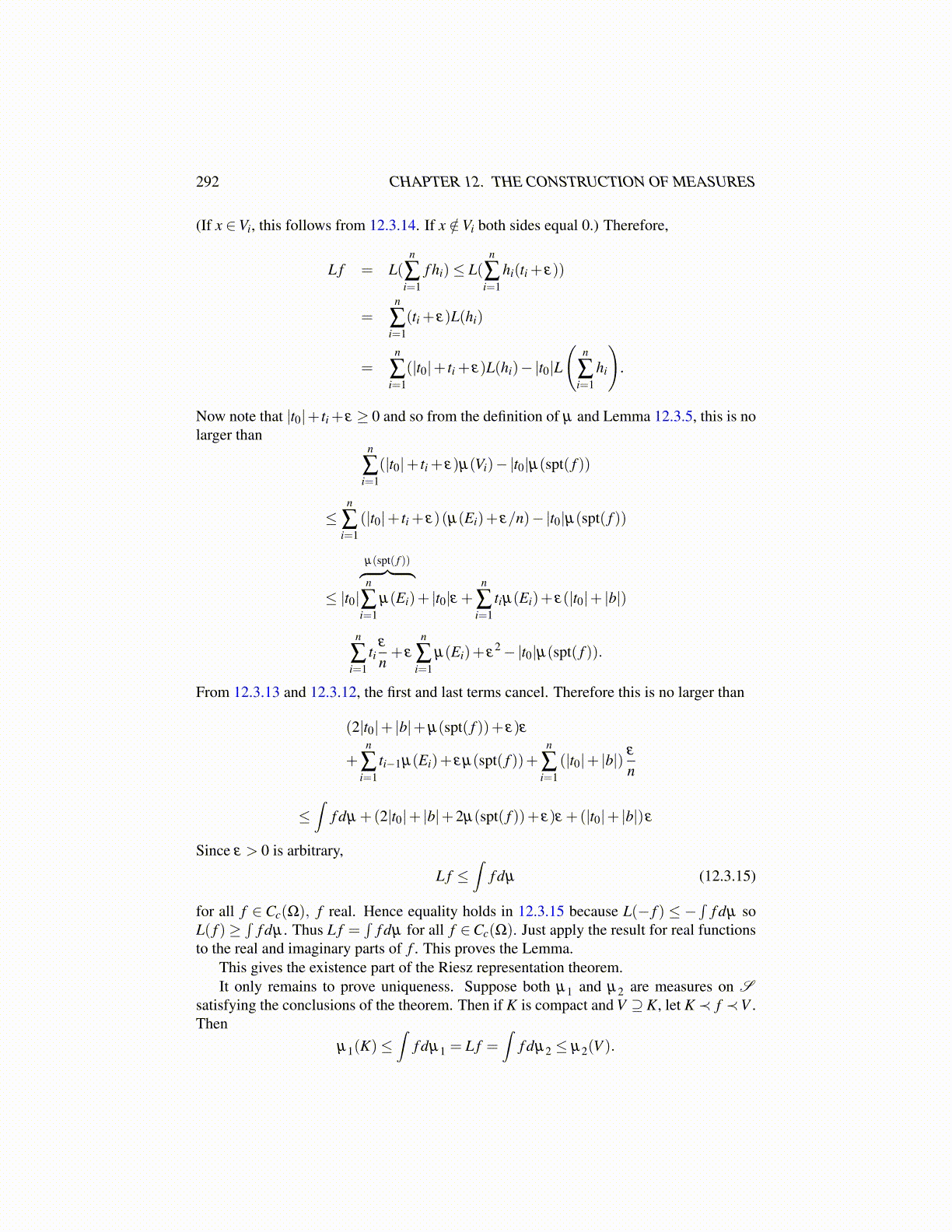
292 CHAPTER 12. THE CONSTRUCTION OF MEASURES
(If x ∈Vi, this follows from 12.3.14. If x /∈Vi both sides equal 0.) Therefore,
L f = L(n
∑i=1
f hi)≤ L(n
∑i=1
hi(ti + ε))
=n
∑i=1
(ti + ε)L(hi)
=n
∑i=1
(|t0|+ ti + ε)L(hi)−|t0|L
(n
∑i=1
hi
).
Now note that |t0|+ ti +ε ≥ 0 and so from the definition of µ and Lemma 12.3.5, this is nolarger than
n
∑i=1
(|t0|+ ti + ε)µ(Vi)−|t0|µ(spt( f ))
≤n
∑i=1
(|t0|+ ti + ε)(µ(Ei)+ ε/n)−|t0|µ(spt( f ))
≤ |t0|
µ(spt( f ))︷ ︸︸ ︷n
∑i=1
µ(Ei)+ |t0|ε +n
∑i=1
tiµ(Ei)+ ε(|t0|+ |b|)
n
∑i=1
tiε
n+ ε
n
∑i=1
µ(Ei)+ ε2−|t0|µ(spt( f )).
From 12.3.13 and 12.3.12, the first and last terms cancel. Therefore this is no larger than
(2|t0|+ |b|+µ(spt( f ))+ ε)ε
+n
∑i=1
ti−1µ(Ei)+ εµ(spt( f ))+n
∑i=1
(|t0|+ |b|)ε
n
≤∫
f dµ +(2|t0|+ |b|+2µ(spt( f ))+ ε)ε +(|t0|+ |b|)ε
Since ε > 0 is arbitrary,
L f ≤∫
f dµ (12.3.15)
for all f ∈ Cc(Ω), f real. Hence equality holds in 12.3.15 because L(− f ) ≤ −∫
f dµ soL( f )≥
∫f dµ . Thus L f =
∫f dµ for all f ∈Cc(Ω). Just apply the result for real functions
to the real and imaginary parts of f . This proves the Lemma.This gives the existence part of the Riesz representation theorem.It only remains to prove uniqueness. Suppose both µ1 and µ2 are measures on S
satisfying the conclusions of the theorem. Then if K is compact and V ⊇ K, let K ≺ f ≺V .Then
µ1(K)≤∫
f dµ1 = L f =∫
f dµ2 ≤ µ2(V ).